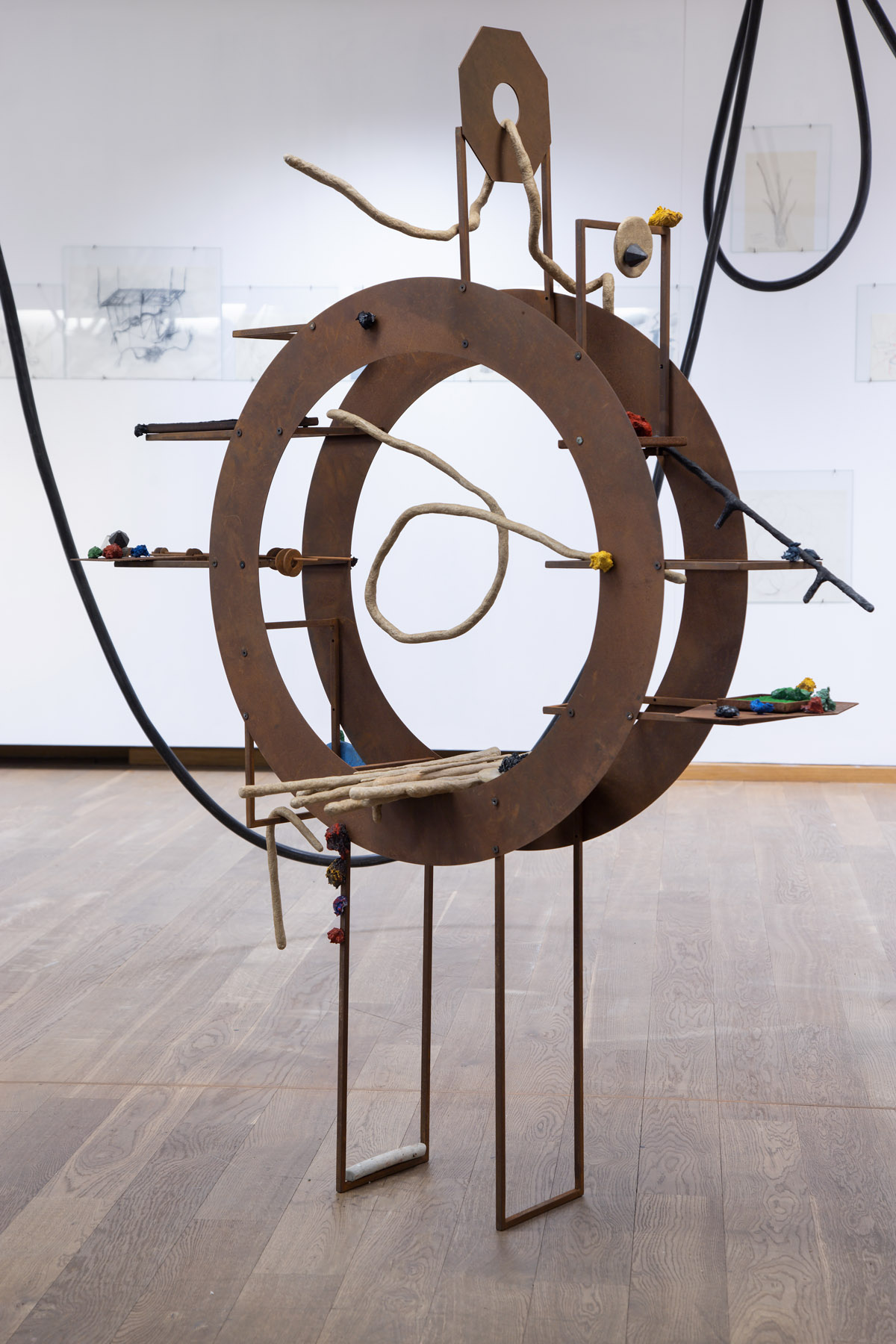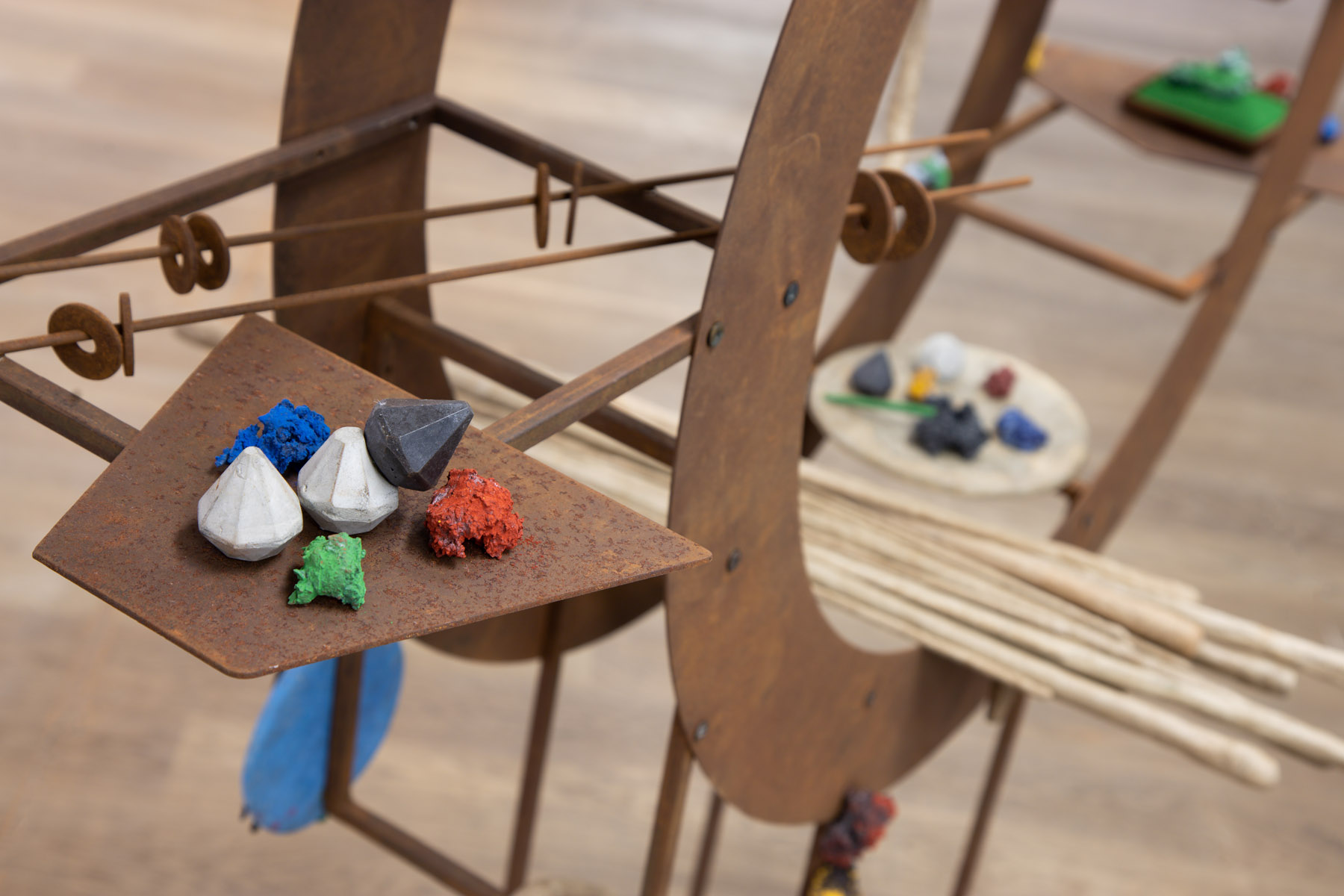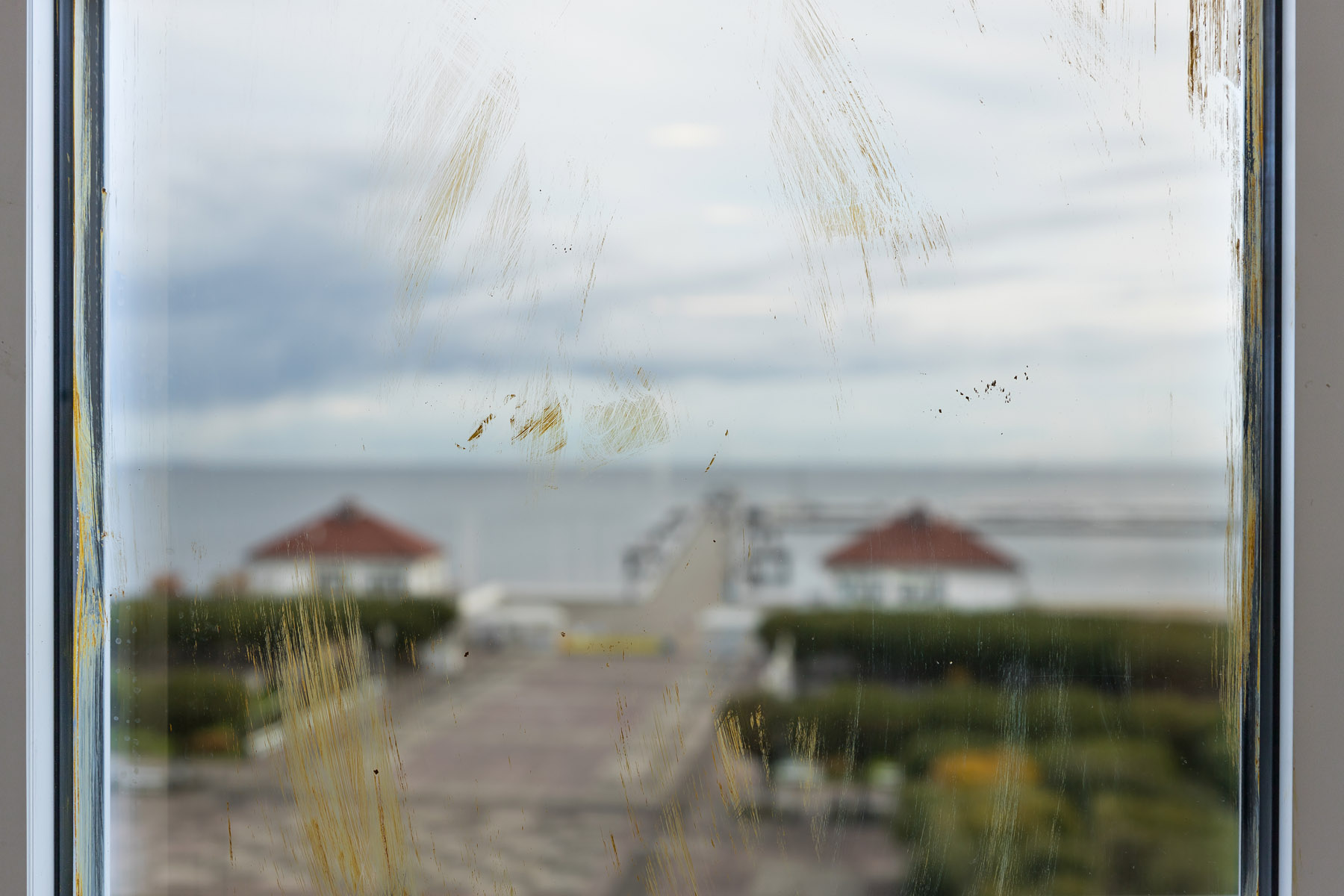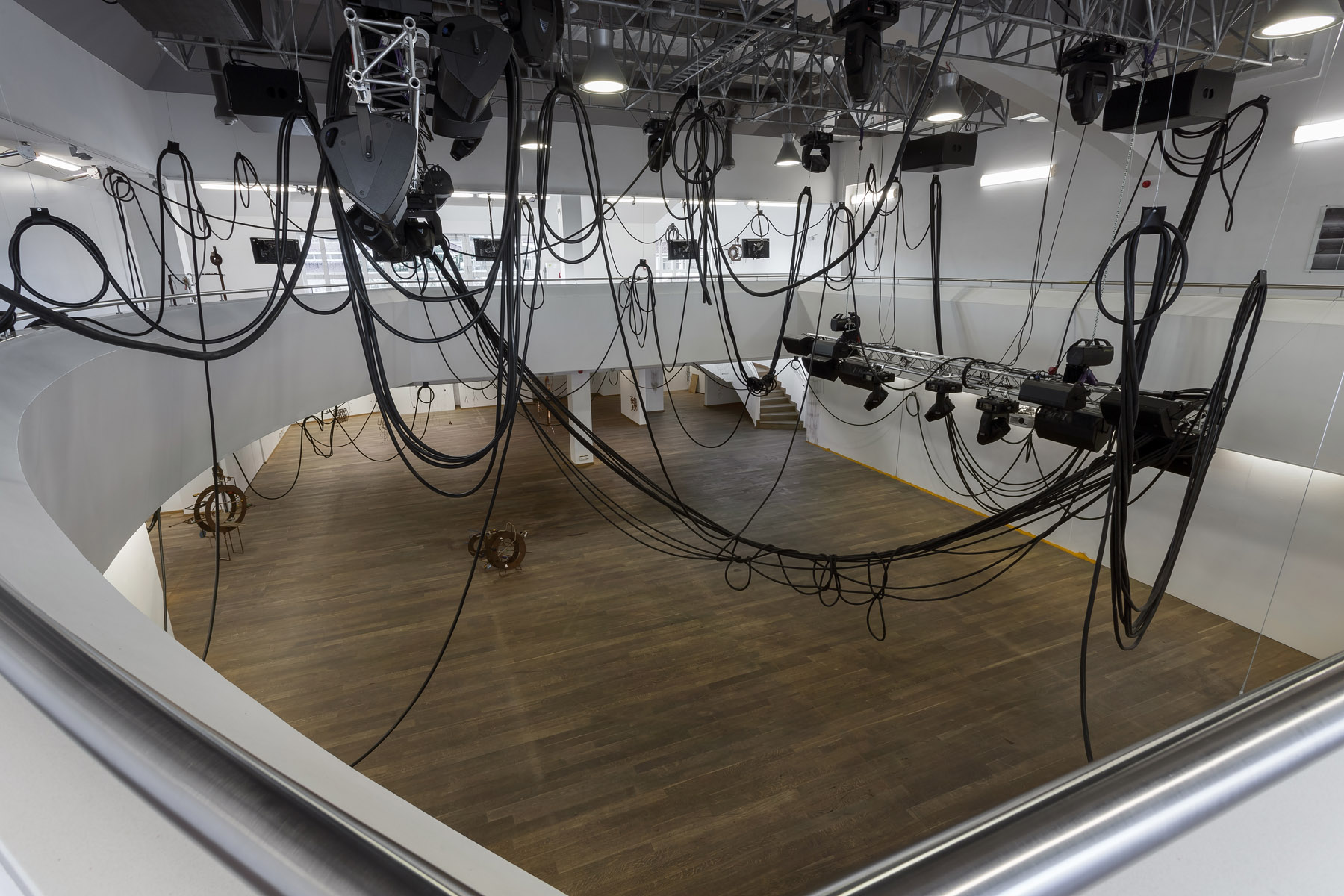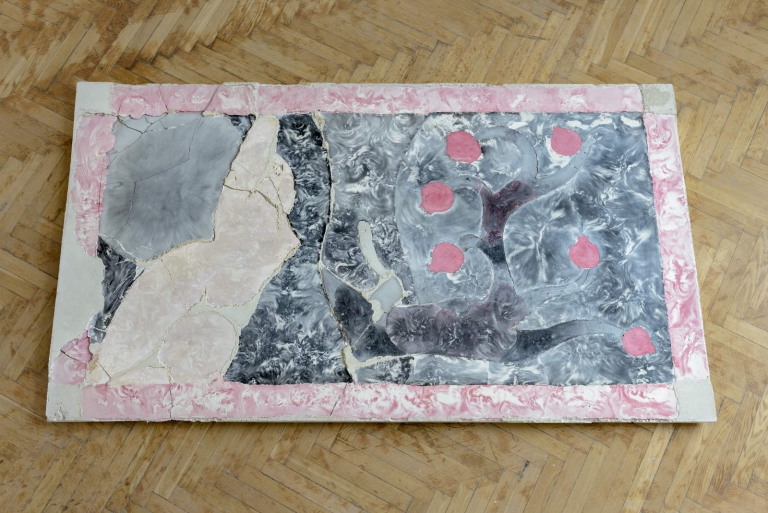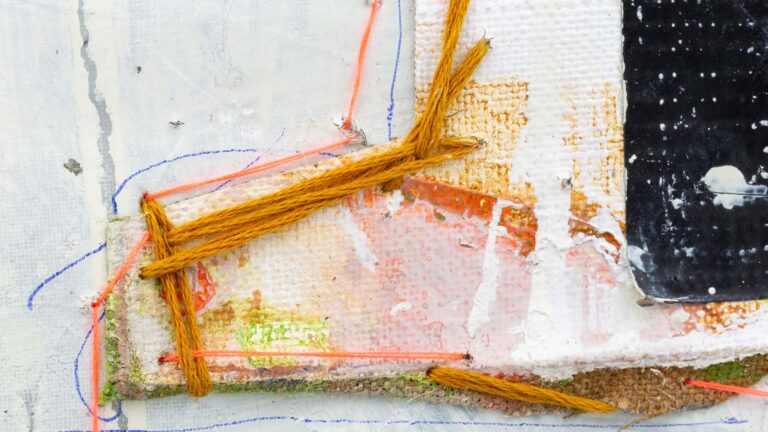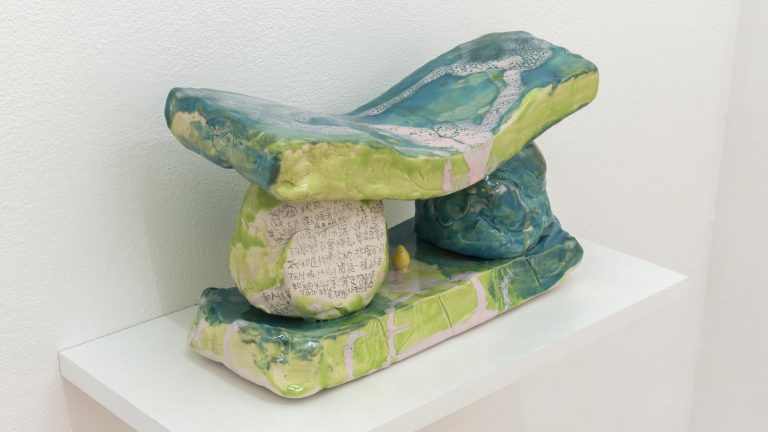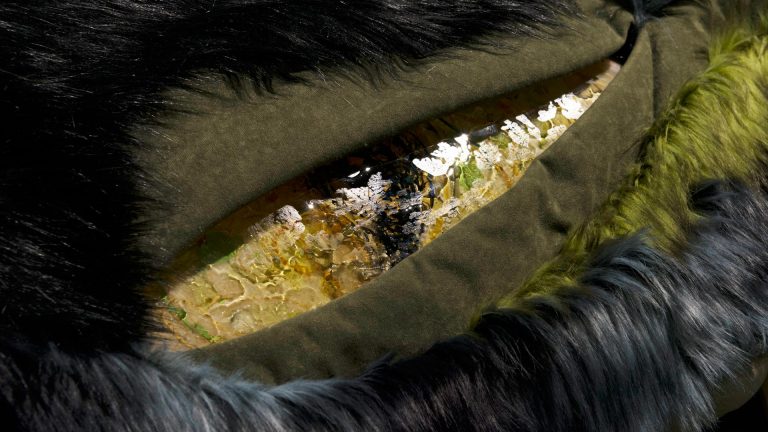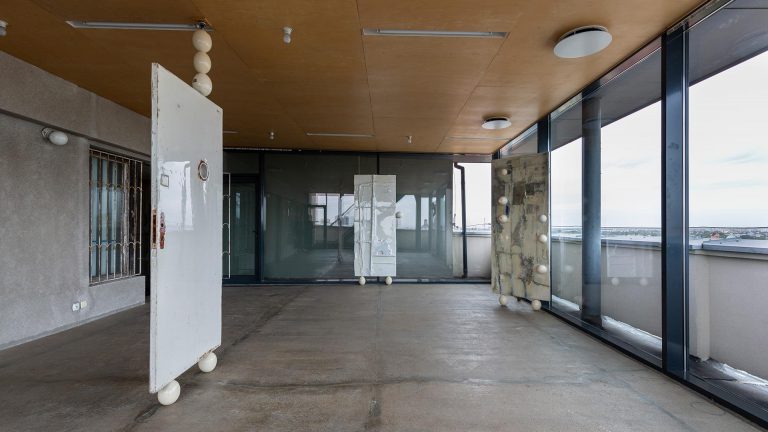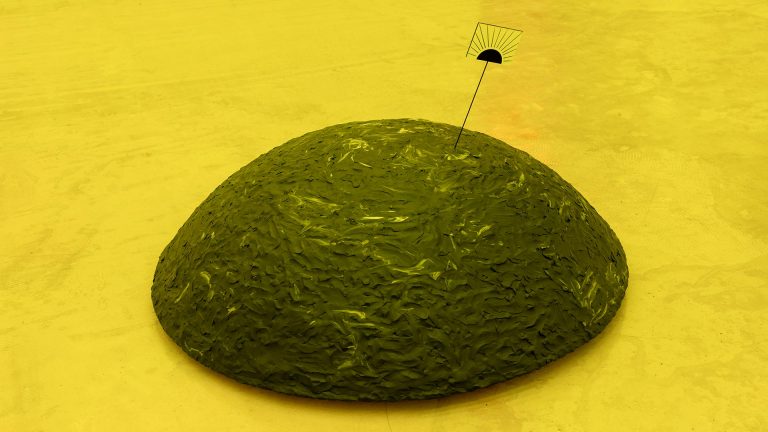Artist: Iza Tarasewicz
Exhibition title: Zakłócenia i Wielokrotności (Disturbances and Multiplicities)
Curated by: Post Brothers
Venue: PGS Sopot, Sopot, Poland
Date: October 8 – November 22, 2020
Photography: all images copyright and courtesy of the artist
From 8 October until 22 November 2020, the State Gallery of Art (PGS) in Sopot, Poland presents Disturbances and Multiplicities, a solo exhibition by Iza Tarasewicz featuring highlights from the last decade of her idiosyncratic art production. Drawing inspiration from the philosophy of atomism, information theory, biology, quantum physics, and chaos theory, her sculptures and installations often take the form of modular, mobile, and reconfigurable systems that are adjusted according to the spaces in which they are displayed. Working from her home in a small village in eastern Poland, Tarasewicz utilizes rural logics and humble materials to invoke communal exchanges of energy and labor between humans and their environments. By organizing material information, she explores forms of survival and making sense in an increasingly chaotic world.
With the unprecedented situation of COVID-19, impending environmental disaster, war, and the eruption of mass demonstrations, our world today is in a state of constant turmoil and precarity. The exhibition Disturbances and Multiplicities addresses these dynamics of disruption and order by emphasizing the roles that noise, turbulence, and the spontaneous assembly of the multitude play in our social, ecological, and formal systems.
Using raw and ready-at-hand materials, Tarasewicz’s artworks test out group dynamics, arranging collections of forms within an interface to model relations. The repetition and aggregation of elements provoke a sensitivity to moments of disequilibrium, revealing where a system breaks down and confusion gathers and self-organizes. Her practice encourages us to consider how production and relationships are organized across scales, connecting the economic, biological, political, and social world to the molecular and the cosmic.
The centerpiece of the exhibition is an 800-meter-long loop of black silicone rope that drapes from the ceiling and crisscrosses throughout the exhibition space. Its title, Arena III, refers to ancient enclosures where events would take place: the amphitheater, the stadium, and the marketplace, the first stages of politics, recreation, performance, debate, and collectivity. In 2018, this work was wrapped around the venerated building of the Zachęta National Gallery of Art in Warsaw, provocatively declaring the museum as a site for public discussion. Here, the massive circle is brought from the outside in to produce a soft and fluctuating architecture akin to a dense jungle of vines or a giant intestinal track. The monumental liana is an instrument for mark-making, for bounding entities together and dividing. This three-dimensional drawing traces a route of loops and twists, generating an abstract choreography for the eye and the body, and framing the rest of the exhibition.
A key component of the exhibition is a selection of preparatory drawings and a series of hanging assemblages made of entangled nets and dense forests of delicate metal rods. These works chart relations and linkages within a matrix, accentuating the importance of noise and multiplicity in communication. Spontaneous and improvised as if tracing out a thought process, the compositions are diagrams of possible architectures and recall the role of repetition in folk traditions. This connection of the handheld to the monumental is also present in a photographic series and other objects that model parallels between cellular, social, agricultural, and celestial interactions.
A set of oxidized steel display apparatuses and wall-mounted reliefs organize cluttered information. Appearing as a form of outdoor shelving or almost as rusted rudimentary spacecrafts, the machines collate and display inventories of base materials such as plant fiber and iron oxide color pigment. The aggregates produce multicolored formations that are at once abstract and familiar, displaying principals of fusion and fission. Information is embedded in these combinations of materials, which are metabolized and organized within a productive system. At the margins and boundaries of the exhibition space, yellow ochre pigment accumulates like dust. Titled Yellow Coal, this installation references a short story by the Polish-Ukrainian author Sigizmund Krzhizhanovsky, where a society channels bad feelings, anger, suffering, and negativity into a limitless energy resource. Iza Tarasewicz’s practice invokes this reframing of bodily and ecological economics through technologies of preparation, distribution, and connection. She mobilizes a functionality of abstraction to make visible the inventiveness of life to harness and accommodate dynamic, uncertain, and destructive forces. The exhibition Disturbances and Multiplicities considers how such experiments in organizing the noisy masses can help us imagine a reordering of our world.
Iza Tarasewicz (b. 1981 in Białystok, Poland) graduated from the Faculty of Sculpture and Performing Arts at the Academy of Fine Arts in Poznań in 2008. She lives and works in Kolonia Koplany, a small village near Białystok where she was raised. Working in sculpture, installation, drawing, and performance, her work has garnered significant acclaim both at home and abroad. She was the winner of the 2019 Bayerischen Kunstförderpreise in Fine Arts and the winner of the VIEWS [Spojrzenia] 2015 Deutsche Bank Foundation Award, the premiere prize for young art in Poland, co-organized with Zachęta National Gallery of Art in Warsaw. In 2016, she participated in the 32nd Bienal de São Paulo, the 5th Moscow International Biennale for Young Art, and the 11th Gwangju Biennale, and in 2018 she represented Poland at the 16th Venice Architecture Biennale in collaboration with Centrala. Her work has been featured in numerous solo and group exhibitions internationally, at such venues as the Ludwig Museum, Budapest (2020), Kunsthaus Dresden (2020), Pori Art Museum, Finland (2019), Museum of Contemporary Art, Zagreb (2018), Zachęta National Gallery of Art, Warsaw (2018), Contemporary Art Centre, Vilnius (2018), KUMU Art Museum, Tallinn (2017), Galeria Arsenał, Białystok (2017), Nogueras Blanchard, Madrid (2017), Futura, Prague (2016), European Central Bank, Frankfurt (2016), CCA Toruń (2016), Centre for Contemporary Art Ujazdowski Castle, Warsaw (2015), Kunsthalle Bratislava (2015), Galleria Civica di Modena, Modena (2015), Polnisches Institut Berlin (2014), Krolikarnia X. Dunikowski Museum of Sculpture, Warsaw (2013), amongst many others. Her monumental installation Once Information Has Passed Into Protein is currently on display at the Museum of Fine Art Leipzig, commissioned by Art Collection Telekom.
Iza Tarasewicz, Arena III (2018), 800 m circle, silicon rope. exhibition view, Disturbances and Multiplicities at PGS Sopot
Iza Tarasewicz, Arena III (2018), 800 m circle, silicon rope. exhibition view, Iza Tarasewicz: Disturbances and Multiplicities at PGS Sopot
Iza Tarasewicz, Arena III (2018), 800 m circle, silicon rope. exhibition view, Iza Tarasewicz: Disturbances and Multiplicities at PGS Sopot
Iza Tarasewicz, detail, Arena III (2018), 800 m circle, silicon rope
Exhibition view, Iza Tarasewicz: Disturbances and Multiplicities at PGS Sopot
Iza Tarasewicz, Halt The Cyclone 4 (2016), cement, hemp fiber, oxidized steel, iron-oxide pigments
Iza Tarasewicz, Halt The Cyclone 4 (2016), cement, hemp fiber, oxidized steel, iron-oxide pigments
Iza Tarasewicz, Halt The Cyclone 6 (2016), cement, hemp fiber, oxidized steel, iron-oxide pigments
Iza Tarasewicz, Halt The Cyclone 6 (2016), cement, hemp fiber, oxidized steel, iron-oxide pigments
Exhibition view, Iza Tarasewicz: Disturbances and Multiplicities at PGS Sopot
Iza Tarasewicz, Selection of drawings (2010-2020), 15 works on paper. exhibition view, Iza Tarasewicz: Disturbances and Multiplicities at PGS Sopot
Iza Tarasewicz, detail, drawings (2010-2020)
Iza Tarasewicz, detail, drawings (2010-2020)
Iza Tarasewicz, detail, drawings (2010-2020)
Iza Tarasewicz, detail, drawings (2010-2020)
Iza Tarasewicz, exhibition view, Iza Tarasewicz: Disturbances and Multiplicitiesat PGS Sopot. Featuring: In Myriads, Things Cry Out XI (2020), steel, copper, brass. and What Whispers Are These? X (2019), steel, brass
Iza Tarasewicz, exhibition view, Iza Tarasewicz: Disturbances and Multiplicitiesat PGS Sopot. Featuring: In Myriads, Things Cry Out XI (2020), steel, copper, brass. and What Whispers Are These? X (2019), steel, brass
Iza Tarasewicz, detail, In Myriads, Things Cry Out XI (2020), steel, copper, brass
Iza Tarasewicz, detail, In Myriads, Things Cry Out XI (2020), steel, copper, brass
Exhibition view, Iza Tarasewicz: Disturbances and Multiplicities at PGS Sopot
Iza Tarasewicz, What Whispers Are These? XII (2020), steel, brass. exhibition view, Iza Tarasewicz: Disturbances and Multiplicities at PGS Sopot
Iza Tarasewicz, What Whispers Are These? XII (2020), steel, brass. exhibition view, Iza Tarasewicz: Disturbances and Multiplicities at PGS Sopot
Iza Tarasewicz, What Whispers Are These? IX (2020), steel, brass
Iza Tarasewicz, In Myriads, Things Cry Out IX (2018), steel, copper, brass
Exhibition view, Iza Tarasewicz: Disturbances and Multiplicities at PGS Sopot
Exhibition view, Iza Tarasewicz: Disturbances and Multiplicitiesat PGS Sopot. Featuring: Tools (2018-2020), wooden tools for weaving models. and Nets (2019), rubber, hemp rope
Exhibition view, Iza Tarasewicz: Disturbances and Multiplicities at PGS Sopot
Iza Tarasewicz, What Whispers Are These? IV (2019), steel, brass
Iza Tarasewicz, Once Information Has Passed Into Protein, (2019) , steel, copper, brass
Exhibition view, Iza Tarasewicz: Disturbances and Multiplicitiesat PGS Sopot. Featuring: What Whispers Are These? VII (2020), steel, brass. and Yellow Coal (2015), site-specific installation using dry yellow ochre iron oxide pigment. And Arena III (2018), 800 m circle, silicon rope
Exhibition view, Iza Tarasewicz: Disturbances and Multiplicities at PGS Sopot
Iza Tarasewicz, Halt The Cyclone 3 (2016), cement, hemp fiber, oxidized steel, iron-oxide pigments
Iza Tarasewicz, Halt The Cyclone 3 (2016), cement, hemp fiber, oxidized steel, iron-oxide pigments
Iza Tarasewicz, Halt The Cyclone 5 (2016), cement, hemp fiber, oxidized steel, iron-oxide pigments
Iza Tarasewicz, Halt The Cyclone 5 (2016), cement, hemp fiber, oxidized steel, iron-oxide pigments
Iza Tarasewicz, Halt The Cyclone 5 (2016), cement, hemp fiber, oxidized steel, iron-oxide pigments
Iza Tarasewicz, Yellow Coal (2015), site-specific installation using dry yellow ochre iron oxide pigment
Exhibition view, Iza Tarasewicz: Disturbances and Multiplicities at PGS Sopot
Iza Tarasewicz, Variables (2020), window compositions, steel, brass. exhibition view, Iza Tarasewicz: Disturbances and Multiplicities at PGS Sopot
Iza Tarasewicz, detail, Variables (2020), window compositions, steel, brass
Iza Tarasewicz, detail, Yellow Coal (2015), site-specific installation using dry yellow ochre iron oxide pigment
Exhibition view, Iza Tarasewicz: Disturbances and Multiplicitiesat PGS Sopot. Featuring: Assembly (2020), archival footage of crowd, 6 sec. loop, presented on 8 video monitors. and Arena III (2018), 800 m circle, silicon rope
Iza Tarasewicz, Assembly (2020), archival footage of crowd, 6 sec. loop
Exhibition view, Iza Tarasewicz: Disturbances and Multiplicitiesat PGS Sopot. Featuring: Assembly (2020), archival footage of crowd, 6 sec. loop, presented on 8 video monitors. and Arena III (2018), 800 m circle, silicon rope
Exhibition view, Iza Tarasewicz: Disturbances and Multiplicitiesat PGS Sopot. Featuring: Matrix (2013), Set of 16 analogue photographs, glass frame. and Points (2010), hog intestines, glass, steel
Iza Tarasewicz, Matrix (2013), Set of 16 analogue photographs, glass frame
Iza Tarasewicz, Points (2010), hog intestines, glass, steel. photo by Piotr Żyliński
Iza Tarasewicz, Detail, Points (2010), hog intestines, glass, steel. Photo by Michał Strykowski
Exhibition view, Iza Tarasewicz: Disturbances and Multiplicitiesat PGS Sopot. Featuring: Variables (2020), window compositions, steel, brass. and Halt The Cyclone 1 (2016), cement, hemp fiber, oxidized steel, iron-oxide pigments
Iza Tarasewicz, Do, Dico, Addico II (2017), oxidized steel, hemp fibre, natural pigments (indigo, dragontree, curcuma, cochenile, blogwood, madder root, aloe, walnut), clay, terra-cotta, oxidized wire, plastic, paper
Exhibition view, Iza Tarasewicz: Disturbances and Multiplicitiesat PGS Sopot. Featuring: Yellow Coal (2015), site-specific installation using dry yellow ochre iron oxide pigment. and Untitled (2018), aquarelle on paper
Iza Tarasewicz, Arena III (2018), 800 m circle, silicon rope. exhibition view, Disturbances and Multiplicities at PGS Sopot
Iza Tarasewicz, detail, Arena III (2018), 800 m circle, silicon rope. and Yellow Coal (2015), site-specific installation using dry yellow ochre iron oxide pigment
Iza Tarasewicz, detail, Yellow Coal (2015), site-specific installation using dry yellow ochre iron oxide pigment.









